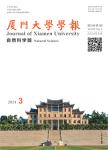Use of Data Mining to Support the Development of Knowledge Intensive CAD
Use of Data Mining to Support the Development of Knowledge Intensive CAD作者机构:Department of Industrial and System EngineeringThe Hong Kong Polytechnic UniversityDepartment of Industrial and System EngineeringThe Hong Kong Polytechnic UniversityDepartment of Industrial and System EngineeringThe Hong Kong Polytechnic University Hong Kong ChinaHong Kong ChinaHong Kong China
出 版 物:《厦门大学学报(自然科学版)》 (Journal of Xiamen University:Natural Science)
年 卷 期:2002年第41卷第S1期
页 面:201-页
核心收录:
学科分类:1305[艺术学-设计学(可授艺术学、工学学位)] 13[艺术学] 08[工学] 080203[工学-机械设计及理论] 081304[工学-建筑技术科学] 0802[工学-机械工程] 0813[工学-建筑学] 080201[工学-机械制造及其自动化]
主 题:Use of Data Mining to Support the Development of Knowledge Intensive CAD In KIC
摘 要:In order to compete in the global manufacturing mar ke t, agility is the only possible solution to response to the fragmented market se gments and frequently changed customer requirements. However, manufacturing agil ity can only be attained through the deployment of knowledge. To embed knowledge into a CAD system to form a knowledge intensive CAD (KIC) system is one of way to enhance the design compatibility of a manufacturing company. The most difficu lt phase to develop a KIC system is to capitalize a huge amount of legacy data t o form a knowledge database. In the past, such capitalization process could only be done solely manually or semi-automatic. In this paper, a five step model fo r automatic design knowledge capitalization through the use of data mining is pr oposed whilst details of how to select, verify and performance benchmarking an a ppropriate data mining algorithm for a specific design task will also be discuss ed. A case study concerning the design of a plastic toaster casing was used as an illustration for the proposed methodology and it was found that the avera ge absolute error of the predictions for the most appropriate algorithm is withi n 17%.



